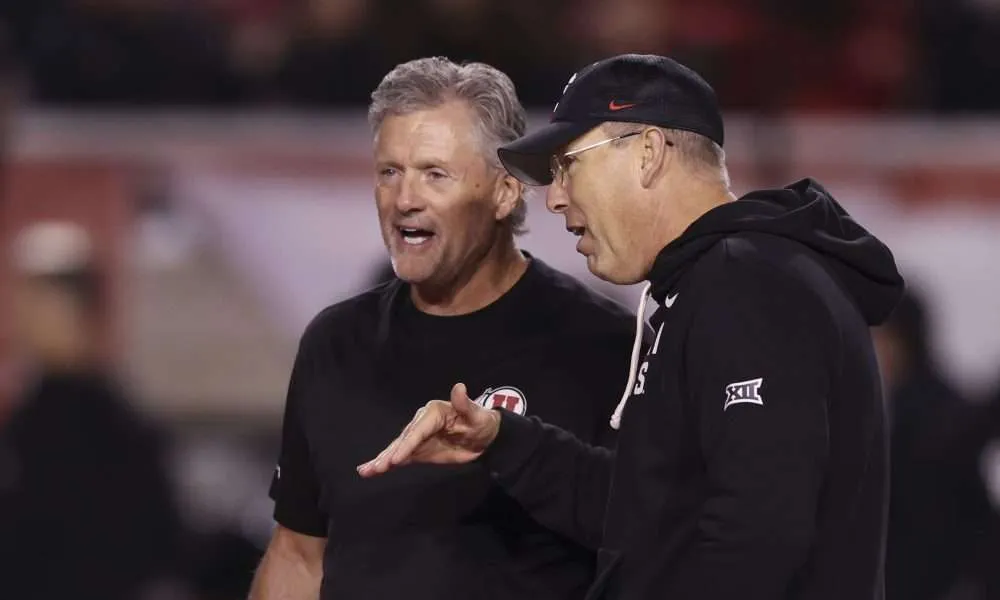NIL
NIL is changing college sports; for better or worse?
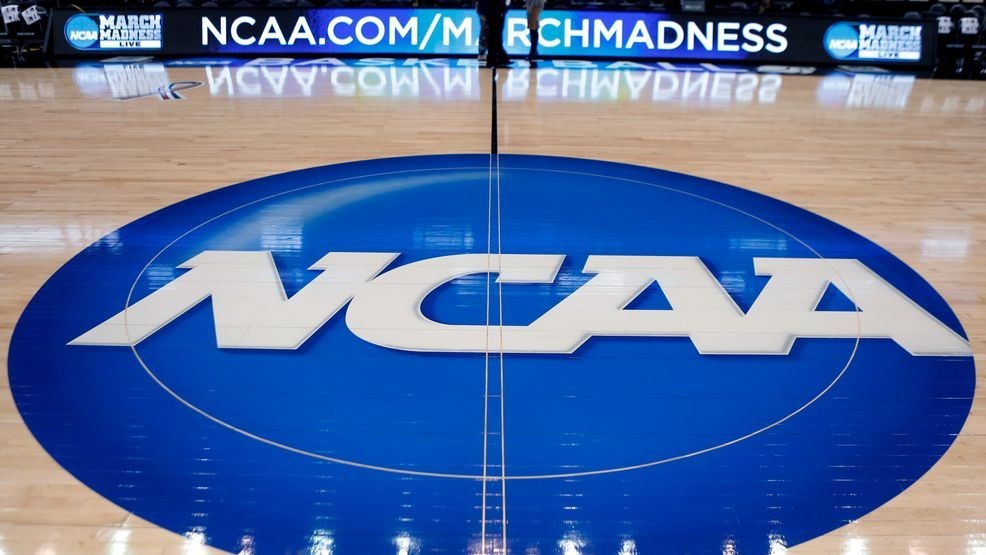
HUNT VALLEY, Md. (TNND) — It’s been nearly four years since the NCAA enacted a new policy allowing college athletes to profit from their name, image and likeness, and just a few weeks since a federal judge opened the door for college athletic departments to pay athletes directly.
Much of the details are still being worked out in the courts. Key components like roster limits, scholarship limits and payment pools are still up in the air.
As is a governing body to oversee all of these new rules, since most current regulation is a patchwork of state laws, legal settlements and NCAA rules.
But, we are starting to see the impacts of college athletes getting paid – and what it means for the enterprise as a whole.
Depending on who you ask, the historical shift is: long overdue for athletes who’ve spent thousands of hours grinding for their craft; late to the party in terms of global sports; the official death certificate for amateurism and the “student” side of “student-athlete”; or, an inevitable reality that has to run wild before it gets reined in and regulated.
To the league itself, it’s a positive step.
When a judge granted preliminary approval for a framework for schools to pay athletes, NCAA President Charlie Baker said it would “help bring stability and sustainability to college athletics while delivering increased benefits to student athletes for years to come.”
The push for college athletes to get paid spans decades, with legal challenges and legislative efforts dating back to at least the early 2000s. Which is surprising, considering the NCAA has been a multi-million dollar industry for several decades, and a multi-billion dollar industry for about a decade.
That disparity is due to the idea of “amateurism,” a word many experts and analysts use when they cite concerns about completely commercializing college sports. That idea goes back more than a century, to 1800s England, where sports were only for the wealthy, and the working class didn’t want them to be able to pay their way to victory.
“I don’t want to say [amateurism] is going to die, but it will certainly be the commercial aspects that are going to permeate,” said David Hedlund, the chairman of the Division of Sport Management at St. John’s University. “I think we’re going to see and hear less and less about amateurism, and college sports are going to look more like professional sports, or a training ground for professional sports.”
The idea that sports are for enjoyment and the love of the game rather than money is a noble one. And players can love the game and make money off their talents at the same time.
But many experts say amateurism has long been dead; the NCAA was just, for whatever reason, the last organization behind the International Olympic Committee to let it die. It’s part of an effort to keep pace with the rest of the world. Overseas soccer and basketball players are spotted when they’re 12 to 14 years old, and go pro when they turn 18.
“We’re in a global marketplace,” said Matt Winkler, a professor and program director of sports analytics and management at American University. “We sort of have to keep up with the other nations if we want to strive and have those great moments in sports for our Olympic teams and our World Cup teams and so forth.”
Coaches have long been compensated, and universities have long profited off their sports teams.
“The money has always been there. It’s just a lot more front-facing now, I think, than it’s been in the past,” Hedlund said.
Some sports analysts say it was quite front-facing in this year’s NCAA Men’s Basketball Tournament.
March Madness was devoid of any significant upsets or Cinderella teams. For the first time in five decades, every team that made it to the Sweet 16 came from a power conference, including all four No. 1 seeds and all but one No. 2 seed.
And, every team that made it to the Final Four was a No. 1 seed.
ESPN analyst Stephen Smith said NIL deals and the now no-limits transfer portal are to blame for why mid-major programs didn’t see much success, and top-tier schools prevailed.
“If there was no NIL, if there was no portal and you have the mid-majors go 0-6 in the second round, please, we ain’t sweating that,” Smith said. “But when you’re able to point to rules that have been implemented that ultimately shows itself to have inflicted upon the game itself, that’s dangerous.
“College basketball as we knew it – which, to me, is all about March Madness – will cease to exist. Because there’s no madness.”
Experts say there is a serious question mark about the current state of how much colleges can pay to entice players, and how many times players can be enticed enough to transfer.
But not all believe it has to be the death of March Madness or competition in college sports. After all, there’s still Division 2 and 3 universities.
Richard Paulsen, a sports economist and professor at the University of Michigan, said it’s hard to gauge the impact of NIL deals and the transfer portal on competition. Because while the top ten or so power schools may be able to offer the most money to the elite players, there’s still a lot of talent out there.
“The top schools have an advantage in getting the A-level talent, but some of the players that might have sat on the bench at a top school previously could be enticed away with NIL money coming from a second tier school,” Paulsen said. “So I think the impact on competitive balance is maybe a little bit less clear.”
Paulsen says, as a professor, he is worried about the impact NIL deals – particularly million-dollar ones – can have on the students themselves, some 18, 19, 20 years old. It raises the question, does a teenager or young adult need this much money?
Shedeur Sanders is 23 years old, and his NIL valuation at the University of Colorado was roughly $6.5 million. Granted, he’s the son of NFL Hall of Famer and head coach for Colorado Deion Sanders.
But, his 2024 stats were top five in completion percentage, passing touchdowns and yards. Several analysts had him as the top prospect in the 2025 NFL draft, but he slid down to the fifth round, shocking much of the sports world.
Various reports place blame on other reasons – maybe he took more sacks than he should have, maybe NFL executives see traits we can’t see, maybe he bombed interviews with the managers, maybe it had to do with his Hall of Famer dad. And he certainly wouldn’t be the first prospect to get picked later than expected and prove all the teams that passed over him wrong.
But, he’s also losing money by going pro. The iced out, custom “Legendary” chain he wore on Draft Day reportedly cost $1 million.
“It is at least worth noting that five years ago, he wouldn’t have had the online presence that he had, and that could have turned off some NFL teams,” Paulsen said. “Without being in the rooms, I don’t know if it did, but that is possible, and it’s not something that would have been possible even five years ago.”
It begs the question, is it even worth going pro for these top-tier college athletes with insane NIL deals?
In the NBA, new data shows it may not be. The league announced last week just 106 players declared early for the 2025 draft. It’s the fewest since 2015. The number typically hovers around 300.
The drop in early entrants could be lingering effects of the extra COVID year.
But, next year, ten schools will pay their rosters somewhere in the neighborhood of $10 million, including several million dollars per top player. That’s far more than the players would make if they were a second-round draft pick in the NBA.
Winkler said the combination of competitive rosters and the scope of these NIL deals has more to do with this drop in early declarations.
“These deals are getting so big that unless you’re going to be a first round draft choice, maybe if you’re going to be kind of a lottery pick or a top 10, 15 pick, it would be better for you to exhaust your eligibility on a major team, because you’re going to make more,” he said.
So, it might be financially advantageous for athletes to wait on the pros. Some announcers were even suggesting Sanders should go back to college if the NFL didn’t deem him ready for the show. (NCAA rules prohibit him from doing so anyway; he declared for the draft and signed with an agent).
But what about the fact that these players, who become millionaires, are still students?
Schools are working to provide resources for these athletes so they can get advice on what to do with their wealth, so that they don’t spend it irresponsibly. Which is not to assume all of them would; it goes without saying this money could greatly benefit an athlete who grew up in poverty and change the trajectory for his/her family.
But Paulsen says he worries about the “student” side of “student-athlete” when we start talking about millions upon millions of dollars and students transferring to whichever school offers them the most. Sometimes credits don’t transfer; sometimes players could feel pressure to fulfill their NIL commitments over their studies, when the stakes are that high.
At a young age, these players are under an unprecedented amount of pressure, from their coach, from their family, from their financial adviser, from social media, from broadcast exposure, from stakeholders, from the tens of millions of people who can now legally bet on them.
“Players should be able to leave bad situations, absolutely, and I certainly support players’ autonomy and chasing financial benefit from their athletic talents,” Paulsen said. “But if we’re going to call them student athletes, we should have some emphasis on the student part of that too. Some of these rules that are helping the athlete are hurting the student.”
One of those rules, he says, is the transfer portal. But in addition to harming the students’ academic careers, experts say this also takes a toll on teams and fans of those teams.
Take Nico Iamaleava for example. The star quarterback abruptly parted ways with Tennessee over an alleged compensation dispute with the school’s collective. He demanded an NIL readjustment to $4 million to keep playing for the Vols, and when they said no, he transferred to UCLA, though it’s unclear if they met his demands.
The exit shocked his teammates in Knoxville, with one of his receivers and defensive backs, Boo Carter, telling reporters, “He left his brothers behind.”
But the new pay-to-play system does also beg the question of school loyalty, not just for the players, but the fans too.
Paulsen says roster continuity, players spending all four years playing for one team, has been an endearing feature of sports like women’s college basketball, when you look at the legacies, for example, Caitlin Clark built at the University of Iowa, or Paige Bueckers at the University of Connecticut.
“I do think there’s definitely some extent to which all this player movement can have negative consequences,” he said.
But, some experts doubt fans of teams need to see the same or similar team year to year.
After all, this past NCAA Men’s March Madness Championship between Florida and Houston – the one ESPN’s Smith said featured no madness at all – scored 18.1 million viewers on CBS. That’s up 22% from last year’s championship, and the biggest audience since 2019.
The Final Four games, featuring all No. 1 seeds, ranked as the most-watched games in eight years.
In other words, so far, so good when it comes to college sports fandom.
One thing broadly agreed upon among experts is that competition must remain intact. The Florida-Houston matchup was a nailbiter.
“The biggest thing that would kill sports is if there is no competitive balance,” Hedlund said. “It is known when you have a really great team being a not-so-great team, if the great team probably will win, people don’t want to watch.”
People still appear to be watching. If they stop, one could assume the NCAA would change its course, or it’d be out of all its money too.
Plus, these experts expect regulation soon – possible measures like transfer restrictions, collectively bargained salary caps, conference realignment to avoid concentration, turning athletic departments into LLCs, putting degree completion into bylaws and evening out the number of roster spots, among other rules.
Experts say: be patient, wait for the legal fights to run their course, and wait for the brightest minds in sports – and Congress – to come up with a solution that pleases the players, teams, coaches, schools and fans.
“This is fundamental to the success of sports, so we just need to figure out what rules, what regulations, what governing bodies, how do we facilitate this?” Hedlund said. “We don’t want to ruin sports. That’s what’s at stake here.”
Winkler says it all comes down to the most “hardcore” stakeholders: fans and alumni. If the SEC and Big 10 just ganged up and created their own Premier League and college sports turned into checkbook sports, it could threaten that school pride.
“This year, we definitely saw cracks in the system,” Winkler said. “If the best athletes just go to the top, are [fans] rooting for an inferior product? Are they still going to have that affinity for their school, their team, their degrees, and people that are doing it? This is really going to test that.
“[Schools] have two key pressure points: keep getting a lot of money from TV so you can fund your athletic department, and keep alumni, fans and donors still feeling as engagedThere’s a lot to be worked out in the next several months and probably the next year to really get a boiler plate idea of what the rules and regulations need to be.”
NIL
Texas college football: Will NIL reform help or hurt in 2026?
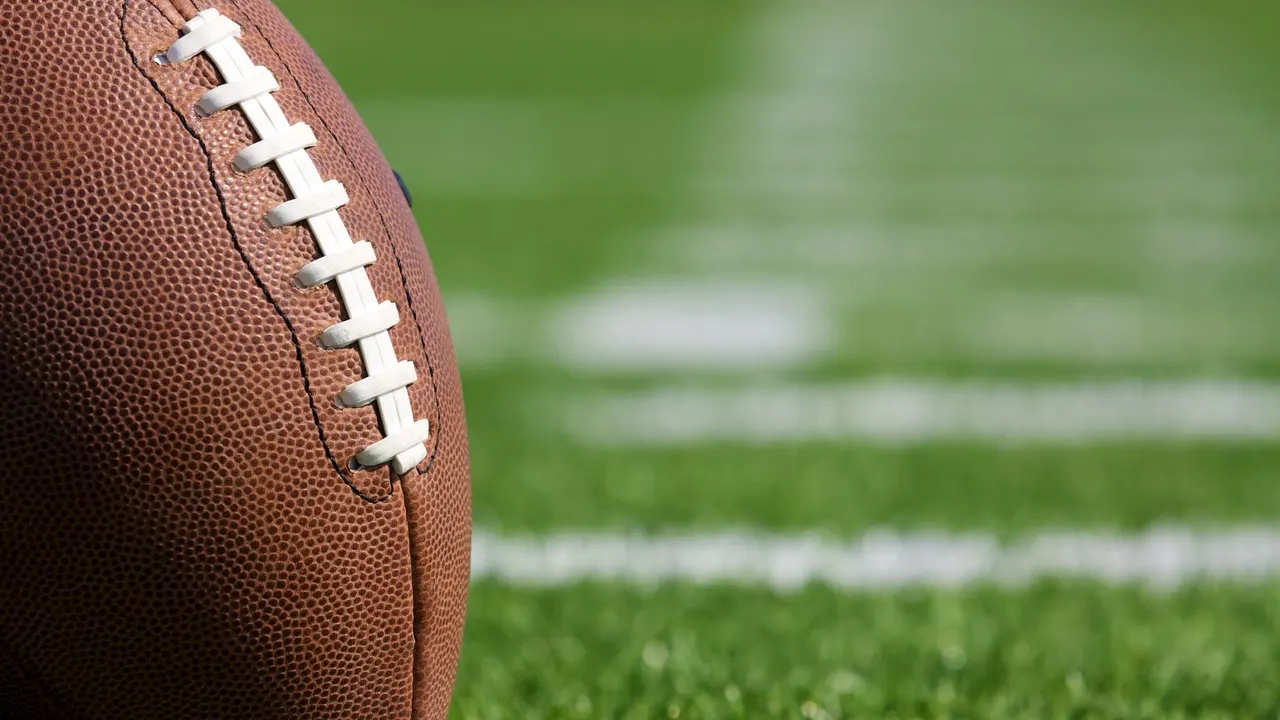

2026 NIL changes could change Texas college sports
For many college football players in Texas, the game has moved off the playing field and to a bargaining table. The transfer portal opens Jan. 2, sparking a bidding war sports analyst Eric Kasimov anticipated.
AUSTIN, Texas – For many Texas college football players, the game has moved off the playing field and to a bargaining table.
The transfer portal opens Jan. 2, sparking a bidding war that sports analyst Eric Kasimov anticipated.
What they’re saying:
“So, what’s going to happen. It’s wide open and the rules are being written as we’re having this conversation right now,” said Eric Kasimov the CEO and founder of SportsEpreneur.
In October, Kasimov wrote about the new NIL rules in Texas.
He predicted compensation would be part of “every serious recruiting conversation.” Direct pay, which is now allowed under a new state law, would be selling points and Texas would be one of the most aggressive NIL markets in 2026. The changes are already paying off.
“Well, I’ll tell you one thing that right now, and it’s close to home for you guys is Texas Tech, right? Texas Tech is a top four team in the playoffs and obviously like a candidate to win it all and they have their mantra of let’s win at all costs,” said Kasimov.
Powerhouse programs like the Longhorns and Aggies are no longer odds-on favorites by recruits. The schools in Austin and College Station have to battle more in-state programs for players who are graduating from high school and must protect those currently on their rosters. Out-of-state programs — with deep pockets — are also making moves.
“You look at an Ohio State University who comes in and they secure one of the best players from Texas, Devin Sanchez last year, five-star recruit and Devin, Sanchez now plays at Ohio State. And I’m sure there’s a lot of schools in the state of Texas that would have said, Hey, why didn’t you stay home? Well, things are different now,” said Kasimov.
A recent $2 billion proposal involving a private equity group by the Big 10 escalated the bidding war. The idea has stalled but still raises a big question.
“If Michigan, Ohio state, Oregon, USC are coming into Texas and taking the top talent because they have the brands and they have extra money that they can give, what is Texas and the SEC going to do,” said Kasimov.
The current NIL situation, according to Kasimov, has no guardrails to it and is just the Wild West. He believes it’s confusing for fans.
FOX 7 Austin asked several fans what they thought. Paul Friedman said he is happy to see student athletes compensated for their services and is not concerned that football has essentially gone pro.
“No, I am not. That’s a direction we’ve been heading for 30 years, and it’s the correct direction. The wrong direction was where they called student-athletes amateurs and paid them under the table illegally,” said Friedman.
Another fan, Kevine Dean, told FOX 7 Austin he doesn’t like what NIL has done to the college game he grew up watching.
Congress may now get involved. Legislation may come up in 2026 with new restrictions.
“And it’s like, you know, you’re in class and you’re, you know you don’t want the teacher giving you too many rules, but you’ve kind of like kind of bent the rules too far. Now, we’re going to get the teachers involved. We’re going to be the bring the principal in here. I don’t think that’s what they want. But they’ve gone so far out of bounds that they need someone to bring it in,” said Kasimov.
There’s talk about a salary cap like in the NFL and a luxury tax like baseball for teams that have big payrolls. Some want modified free agency deals to prevent year-to-year jumps. Some are also calling for a commissioner of college football.
Kasimov doubts the NIL genie will be put back in the bottle.
“If they resolve it, I don’t think it’s resolved forever. I think it gets resolved for that time being,” said Kasimov.
In the meantime, this advice was offered by Kasimov:
- For athletes, seize the opportunity
- For parents, understand the system
- For coaches and schools, adapt fast
- For fans, watch the evolution in real time
“I don’t know if it’ll be the end of kids staying in Texas, I just think it opens it up more,” said Kasimov.
The Texas NIL law was written to automatically adjust to any changes made on the national level.
Interview with SportsEpreneur CEO Eric Kasimov

Dig deeper:
FOX 7 Austin’s Rudy Koski sat down with Eric Kasimov, CEO and founder of SportsEprenuer, to discuss NIL reform and its impact on Texas college football next year.
ERIC KASIMOV: Well, I’ll tell you one thing that right now, and it’s close to home for you guys is Texas Tech, right? Texas Tech is a top four team in the playoffs and obviously a candidate to win it all and they have their mantra of ‘let’s win at all costs’. And I think some of the bigger programs that we’re used to seeing, Texas A&M, University of Texas. They’re like, ‘Hey, what’s going on here? They’ve raised a lot of money.’ And next thing you know, you see a university that wants to go all in with this new way of living. In the college sports world and college football, specifically, a school like Texas Tech can become a big name. So I think in 2026, I think it’s the universities that want to make noise have an opportunity to make noise.
You could look at another university like SMU who joins the ACC, right? And SMU is a program that said when they got to go to the ACC. They didn’t get a TV deal with them. They’re not earning any of the revenue, but what they did is they went out and they earned money on their own. So they’ve already secured $159 million in cash, and then they’ve secured donors down the line of $200 million to cover that gap. So a school like an SMU might be on the forefront of having opportunities to do it. And then you throw everything else that’s going on right now, conversations about private equity deals with the Big 10, $2.4 billion, where each university would get roughly, they’d get different amounts based on which university it is, but roughly $150 million, whether that happens or not, we don’t know. Recruiting is the other one. Recruiting is part of the whole ecosystem, recruiting is a national sport by itself. It always has been to some degree, but now these universities are coming in with more money. You look at an Ohio State University who comes in and secures one of the best players from Texas, Devin Sanchez last year, a five-star recruit and Sanchez now plays at Ohio State. And I’m sure there’s a lot of schools in the state of Texas that would have said, ‘Hey, why didn’t you stay home?’ Well, things are different now. Right. So what’s going to happen, it’s wide open and the rules are being written as we’re having this conversation right now.
RUDY KOSKI: You know, in talking with people, just in general conversation, the average fan, they’re saying, all right, well, yeah, the kids deserve to make some money. And I’ve also heard instead of having the under the table bag men, it’s now out in the open. So what’s the big deal? But you know is it one of those things that no one likes to see the wizard behind the curtain? Is that what this is?
KASIMOV: It could be, you know, sometimes I think we, uh, we know it’s happening, and then you see the video of it, like you work in news, right? Like you hear about the story and then you see the video of it. You’re like, ‘Oh my gosh, I can’t believe that happened.’ It happened anyway, right. It was going on. And yeah, I think that’s, that’s a lot to do with it. Ed Orgeron of LSU said, you know, they used to come in the back door, the bag men, and now they’re just coming through the front door. It’s concerning. It’s been going on. And I think it’s going on now and they are coming through the front door. But there’s still no guardrails to it. So it’s just the Wild West. And so that’s confusing to people. And I think it’s confusing to the fans. Like you said, the average fan.
KOSKI: As you look at what’s coming down the pack, and as you analyze what’s happening, do you think the future is the Big Ten private equity, bringing in big dollar donors like this, getting a cut of the pie, or is it more like what Congress is thinking about doing in regards to just setting caps and turning it into maybe like baseball?
KASIMOV: Yeah, it’s hard to say. I mean, for the big 10, you had 18 universities. Sixteen of them seemed to be OK with the private equity deal, where they would give up 10% of the stake of their media deal. Two universities, University of Southern Cal and Michigan said no. Michigan called it a payday loan. They need all 18 universities to be on the side of that sort of private equity deal. Does that happen? I don’t know. I don’t know if that’s the future of it. I think, and I don’t think the SEC, Greg Sankey, I don’t think they’re on board with it. I don’t think Texas is on board with it, I don’t think Texas A&M is on board with it. At the same time, if the Big 10 were to show up with that, it’s going to force the hand of the SEC to do something. I don’t think the SEC in the state of Texas, which is fertile ground for college football talent right now. I believe there’s for the 2025 NFL season, 199 players in the NFL are from the state of Texas. That’s by far the most; California and Florida follow that up. They do not want to lose that talent. If Michigan, Ohio State, Oregon, USC are coming into Texas and taking the top talent because they have the brands and they have extra money that they can give, what is Texas and the SEC going to do.
At the same time, I don’t know if the Big 10 truly wants this. Obviously some universities do, but they don’t all. And what is, what happens down there? You know, then you have to commit to the Big Ten until 2046 is what they’re saying. That’s a payday that the UC investments, who’s the private equity people behind the deal are going to get. That’s a lot. So I don’t know. I could see if you were to ask me like, ‘Hey, what’s your prediction?’ I think a lot of people might agree with this. Sure, two conferences, the SEC and the Big Ten and more format like the NFL. I don’t know if that’s going to happen, but I guess the other thing to say is Congress is now involved. And it’s like, you know, you’re in class and you don’t want the teacher giving you too many rules, but you’ve kind of like kind of bent the rules too far. Now, we’re going to get the teachers involved. We’re gonna be ‘bring the principal in here.’ I don’t think that’s what they want. But they’ve gone so far out of bounds that they need someone to bring it in.
KOSKI: You touched on this just a moment ago in regards to recruiting. Texas is a big pot for players nationwide. What does this new future mean for recruiting in Texas? Are the days of Texas getting the top running back, A&M, you mentioned Texas Tech, all the kids staying home, that’s not gonna happen anymore?
KASIMOV: These kids grow up, and I think this will always be the case. They want to play for the school that they watched, right? If their parents were fans, if their families were fans and they rooted for A&M, that’s where they want to go. And that’s what they want to play. And that, that letter comes in and that offer comes in. That still holds a lot of value at the same time. I mean, people travel. It’s okay. You know, if you live in Texas and your kid ends up at Oregon or Florida or Florida State, right, you can go and visit and you can travel. I don’t know. If it’ll be the end of kids staying in Texas, I just think it opens it up more. These kids from Texas have been going out of state already. That’s not a new thing. It’s just at what level. So if they’re keeping a certain percentage of the top players to stay in Texas. Does that percentage dwindle down now? And all of a sudden are more of these kids going out there. Like I referenced before, Devin Sanchez, he goes to Ohio State. That’s one of the top corners, one of the top players in the country. People liken him to the Jeremiah Smith of defense. Like that’s the type of impact he could have. With all these universities that we’ve referenced in the state of Texas, how does not one of them kind of keep that kid there? But again, it’s a one-off. Does it happen on a consistent basis where these kids are traveling and go into different places like USC, Oregon, Ohio State?
KOSKI: So is the good thing out of all this as we debate whether or not is the good thing, out of this schools like Texas State, Texas Tech, SMU, UTSA, they now can be players.
KASIMOV: Yes.The problem though is on the other side of it, Houston, who was running a deficit of, of, I believe around $8 to $9 million does not have that sort of money, but that’s the society we live in, right? They have to figure out a way to kind of climb back up in there. But yes, to your point, Texas Tech can compete now because they can play, you know, how do they want to earn money, right? Do they have oil money that they can go out and get and bring this in here and say, ‘Hey, let’s go win at all costs. What do we have to do to bring in the best talent, the best coaches and the best facilities and resources?’ It’s a combination of both. So you’ll have schools that are going to commit to this. They’re going to rise to the challenge. They’re gonna raise the money and they’ll have an opportunity to compete just because you spend a lot of money, doesn’t mean you’ll win. But at the same time, we’re gonna have universities that won’t be able to play, they’ll run a deficit and they’re going to get in trouble, which is like what Trev Albert said, when he says we have a spending problem. So if we just, just because we have the money and we spend it incorrectly, does it mean it’s gonna work out?
KOSKI: And that bodes this next comment, you know, didn’t we see this movie before with Major League Baseball? You know, the Yankees, the Dodgers, they had all the money. Milwaukee didn’t, Cleveland didn’t and something had to be done because you had the haves and the haves not. And where do you go?
KASIMOV: Yeah, it’s frustrating for fans. No doubt. I mean, we had an amazing game seven of the world series, right? If you watch that tune in like amazing baseball top player players, but at the same time in the back end of that, you said, of course the Dodgers want it because they spend the most amount of money. This isn’t a fair system where other teams are out here and they can’t compete at that level, right? A game here, a series there. Yes, they can, but overall it becomes problematic and people tune out. And that’s the big thing, right, TV dollars are going to rule this. The SEC and the Big 10 don’t have the big TV contract. They do now they’re okay. You know, SEC with ESPN, right? All that kind of stuff. Big Ten with FOX. If they lose that down the road, that, that becomes a problem. That’s where they lose the money.
KOSKI: What do you think? What’s your crystal ball say about 26? Do we resolve this? Or does this can keep, do we keep on kicking the can?
KASIMOV: If they resolve it, I don’t think it’s resolved forever. I think it gets resolved for that time being. Unless a commissioner comes in, which I know like Nick Saban has commented, like college ball needs a commissioner. They need a system in place. They need guard rails. I don’t think they can figure that out in time. I think things will change. I think the college ball playoffs will change. I think they’ll continue to adjust that. Uh, it seems though that they’re not running all the different scenarios, right? So they ran the scenarios of like, let’s expand to 12 teams. Okay. So they do that and then Boise state joins the playoff and they get a buy. And it’s like, well, that doesn’t make sense. Why would a group of five team get a bye? Okay. So let’s change it for the second year. Then they change it. For the second. And all of a sudden they’re upset because, uh, Uh, JMU and Tulane are now taking two spots from a team like a Notre Dame or a Texas or a Vanderbilt and that people are upset about that. So what are they going to change it again for the third year? Are they running all the scenarios of what could happen? Right. We don’t know. So I think that becomes a problem is who’s running it and are they thinking through everything. And I just don’t think they are.
KOSKI: That was another question that I want to ask you, please. A lot of people say the bowl system is dead. I don’t think it’s dead. I think it’ going to contract and get back to a core group. What do you think?
KASIMOV: That would be great. I think bowl season, I think what you’re just getting into the nostalgia of it. People are very in, into nostalgia, right? You go to a store today and like the nineties are back and in different times, right, it’d be the seventies and different clothes and different music are coming back. That’s fun. People are excited about that. Let’s go watch some old movies, but in, and in college ball bowl season is so much like that. It’s like, we remember sitting down New Year’s Day and just, well, how much college ball can we watch and right now It’s just not a thing. I mean, there’s bowl games happening and you go ask someone on the street and they’re like, I had no idea there was a game on today. It’s not a, that’s important. Now the playoffs, different people are going to tune in, especially for this round of the playoffs that are coming up and in the future, they’ll continue to do that, but yeah, I think they need to create a system where the bowls matter and a part of that has to do with the fact that these are sponsored, right? They’re spending millions of dollars and I don’t understand how the sponsors are going to want to stay in the game of bowl season. When no one’s watching, no one is going to the games. They’re showing half empty stadiums. So they’re going to have to come up with something to give an advantage. But there’s a lot that goes into it, including the NFL drafts. So a lot of the top players are going to opt out because they want to get ready for the combine and the draft that follows just like soon after. I mean, think about the team that makes a championship game in late January, the combines in late February in the drafts in late April, these players have to get themselves ready to deal with all that comes with that timeline, right. And then that’s. Yeah, it’s serious stuff.
The Source: Information in this report comes from reporting/interviews by FOX 7 Austin’s Rudy Koski.
NIL
Dante Moore’s NIL Valuation As He Weighs NFL Draft Or Oregon Ducks
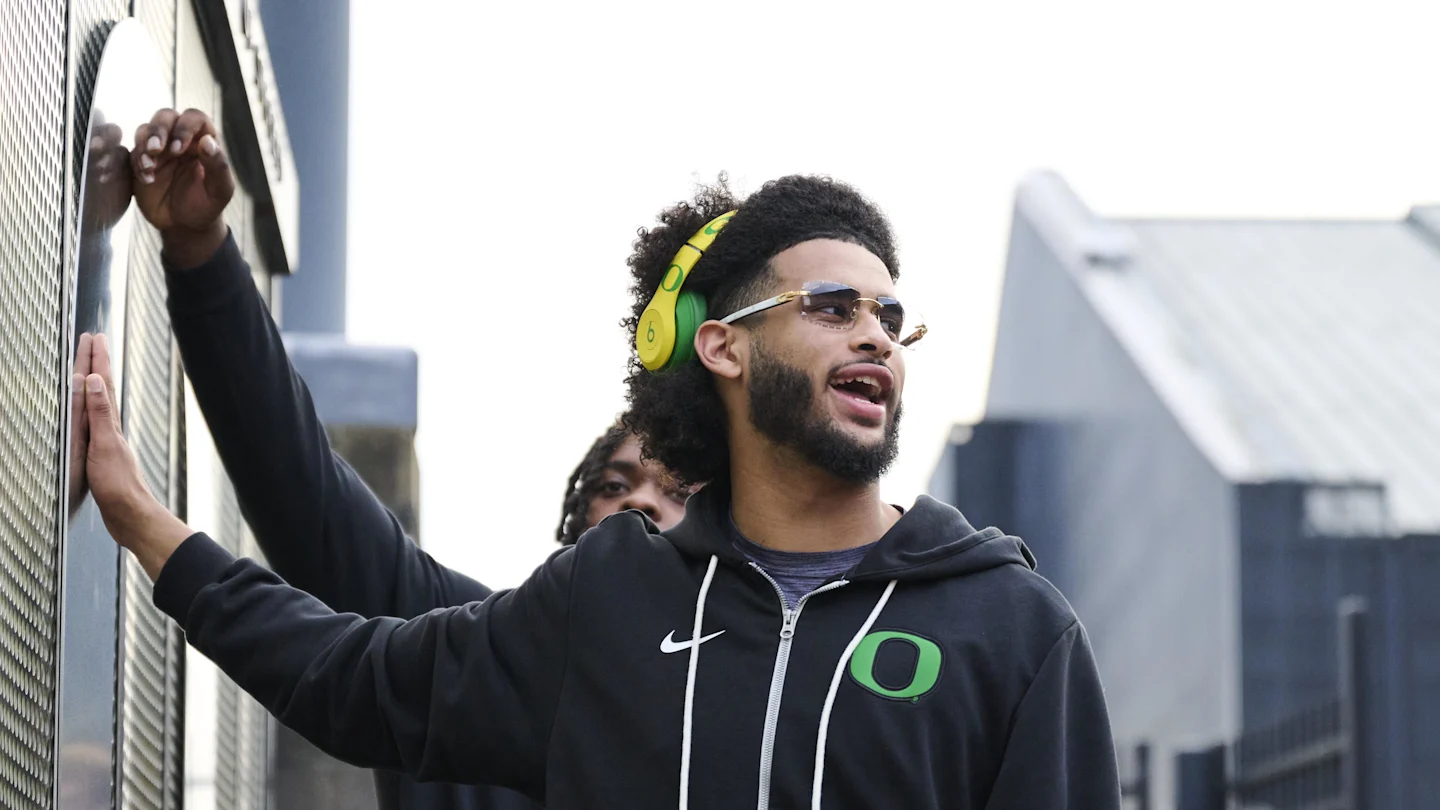
Quarterback Dante Moore is currently leading the No. 5 Oregon Ducks in the College Football Playoff, and faces a major decision while also preparing to face the No. 4 Texas Tech Red Raiders in the Orange Bowl on New Year’s Day. Will Moore declare for the NFL Draft and forgo his final year of college eligibility, or will he return to Eugene, Oregon, for his senior season?
How NIL Could Impact Dante Moore’s NFL Draft Decision
According to On3, Moore has an NIL valuation of $2.3 million, and his roster value is projected to be $2.1 million. His NIL valuation is the 14th-highest in the country, per On3’s rankings, and it’s the highest on Oregon’s roster as well. Other notable quarterbacks like Texas’ Arch Manning, Michigan’s Bryce Underwood, Indiana’s Fernando Mendoza, and Nebraska’s Dylan Raiola all rank above Moore in terms of NIL valuation.

However, Moore is widely considered to be one of the top prospects in the upcoming NFL Draft if he chooses to declare. From a pure football perspective, Moore and Mendoza have seemingly separated themselves as the top quarterbacks in the 2026 NFL Draft class.
From an NIL perspective, Moore lacks the star power of a quarterback like Manning or Mendoza, especially after the Indiana passer’s Heisman Trophy win. Still, Moore has inked NIL deals with Nike, eBay, and Beats by Dre.
MORE: Big Ten Team Emerges as Dark Horse in National Championship Odds
MORE: Oregon Ducks Could Steal Another Transfer Portal Player From USC Trojans
MORE: Oregon Fans Won’t Like ESPN’s Score Prediction For Texas Tech vs. Ducks
SIGN UP FOR OUR NEWSLETTER HERE!

For Moore to turn down the NFL Draft as a projected top-five pick, Oregon would clearly need to make a competitive offer to keep Moore in college. Additionally, Moore and the Ducks could buy draft protection insurance to protect Moore from any injuries that would hurt his earning potential as a professional athlete.
NFL Draft Deadline
Underclassmen that are not participating in the CFP must declare for the NFL Draft by Jan. 5, but Moore and other players in the postseason have a deadline of Jan. 23. The length of Oregon’s season is to be determined, but Moore could wait until late January to reveal his plans for 2026.
Oregon will face No. 4 Texas Tech on New Year’s Day in the Orange Bowl, and the winner of the Orange Bowl will face the winner of No. 9 Alabama vs. No. 1 Indiana on Jan. 9 in the Chick-Fil-A Peach Bowl in Atlanta, Georgia, in the CFP Semifinals. The National Championship will not be played until Jan. 19, explaining the later NFL Draft deadline for underclassmen participating in the CFP.
However, a few Ducks have already announced their intentions to forgo the NFL Draft and return to Oregon for another season. Ducks center Iapani “Poncho” Laloulu and defensive lineman Bear Alexander will spend another year in Eugene, Oregon.

Will ‘Poncho’s’ decision have any impact on what Moore chooses? The Ducks will have a new offensive coordinator with Will Stein being hired by Kentucky as the Wildcats’ newest head coach. With a lot of factors at play, including NIL, Moore’s decision is the biggest one on Oregon’s roster ahead of the 2026 season.
NIL
Predicting landing spots for the top 5 college football transfers (Dec. 26)
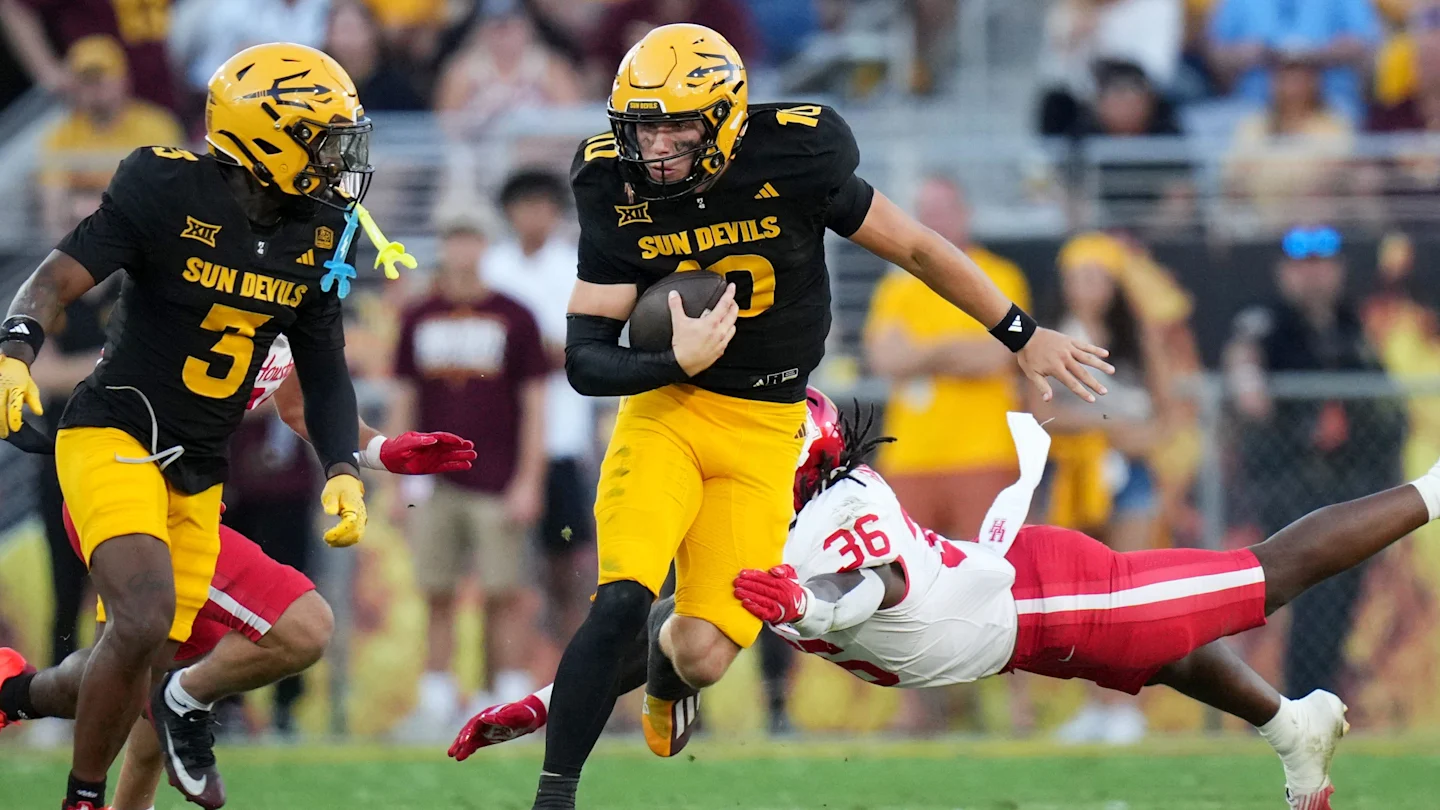
A week out from the transfer portal officially opening, some top college football stars have indicated the intention to move on to a new school. Per On3sports’s rankings, here are the top five portal prospects, and a likely landing spot (or two) for each.
Sam Leavitt, Arizona State QB
Despite many more QBs entering the portal, Leavitt remains at the top of the list of the top portal passers. Leavitt’s 2025 season was limited to just seven games, in which he threw for 1,628 yards and 10 touchdowns. He showed more in 2024, taking ASU to the College Football Playoff with over 3,300 all-purpose yards and 29 touchdowns.
Leavitt is thought to be focusing in on Indiana and Oregon as potential landing spots. He’ll have two years to play and figures to be one of the top passers in college football, wherever he lands.
In 2024, he helped Arizona State reach the College Football Playoff by passing for 2,885 yards and 24 touchdowns and rushing for 443 yards and five more scores. His 2025 season was cut short by an injury in October, but in the portion of the year he could play, Leavitt passed for 1,628 yards and 10 scores in just seven games.
Chaz Coleman, Penn State DE
Colemani is an elite 6’4″ edge rusher who didn’t see a ton of time at Penn State in 2025 as a freshman. Coleman played in nine games, making eight tackles, including three tackles for loss with one QB sack.
Coleman has been projected as likely to end up at Ohio State, where the Buckeyes have done well in developing pass rushers. His position coach at Penn State has now been hired at South Carolina, so the Gamecocks might be a surprise contender on his recruitment.
Drew Mestemaker, North Texas QB
Mestemaker is one of those players who seemingly emerged from nowhere. A former-walk on, he passed for 4,129 yards and 31 touchdowns as a redshirt freshman at North Texas. The 6’4″ QB has three years of eligibility left.
The likely landing spot for Mestemaker remains Oklahoma State, where his North Texas coach Eric Morris has settled. He has also been linked with Texas Tech as one of several other schools interested in the talented young QB.
Byrum Brown, South Florida QB
Brown has spent four years at South Florida, but did preseve his redshirt year in 2022. Last season, he threw for 3,158 yards and 28 touchdowns while running for another 1,008 yards and 14 scores on the ground. He’s the premier dual-threat QB in this transfer class.
Brown’s most likely landing spot will be Auburn, where his USF coach Alex Golesh has landed. Florida is another school that has been documented as a possibility, as former Tulane boss Jon Sumrall will need a talented passer to lead his offense.
Jontez Williams, Iowa State CB
Williams was injured in late September and missed most of the 2025 season, but is a talented defensive back. The 6’2″ defender picked off four passes in 2024 and broke up five more passes. He’ll have two years of eligibility remaining.
Williams hails from Florida and Miami has been notable as a contender for his next landing spot. Of course, Iowa State coach Matt Campbell has moved on to Penn State, so the Nittany Lions should probably be in the conversation as well.
NIL
Iverson Hooks Triggers NIL Money Dispute With UAB Contract

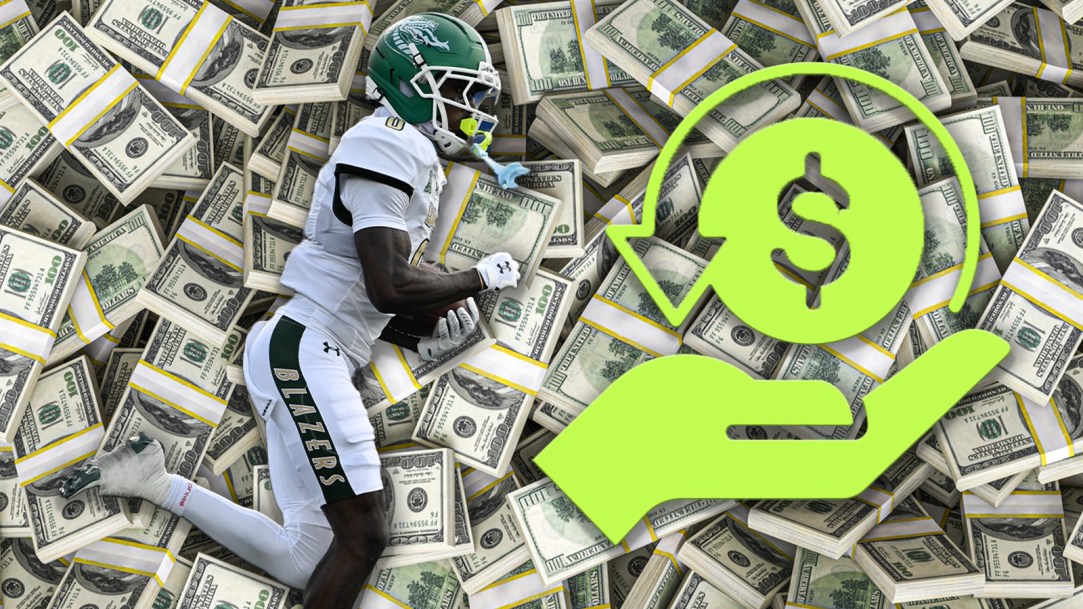
UAB star Iverson Hooks is choosing to enter the transfer portal. His decision not to continue his college football career creates an interesting situation regarding his NIL money.
Does he owe it all back to the Blazers?
I do not know the specific terms of Hooks’ agreement with the university but it appears as though he is on the hook (pun intended) for every single penny he has ever received while in Birmingham. This could get litigious.
Who is Iverson Hooks?
Hooks is not a name you would know unless you are a diehard fan of college football. He was one of the best players on the Group of Six level in 2025.
The former three-star recruit committed to UAB in the Class of 2022 over 11 other offers from schools like UCF, Arkansas State, Western Kentucky and Troy. His first three years with the program saw him record 25 catches for ~300 yards and three touchdowns.
This past season was a huge breakout year for the 5-foot-10, 175-pound pass-catcher.
Hooks caught a team-high 72 passes for a team-high 927 yards and seven touchdowns. He has two years of eligibility remaining.
However, the rising redshirt junior does not plan to finish out his career in Birmingham. Hooks is going to enter the transfer portal.
How much money does he owe back to UAB?
This is where things get murky.
The exact details of Iverson Hooks’ financial agreement at UAB are unknown. Perhaps it had already reached its conclusion after four seasons. I don’t know. Maybe there is no buyout attached to his deal.
However, there is a specific clause for termination attached to a majority of contracts with Blazer Impact, the primary NIL arm in Birmingham.
“If Blazer Impact terminates the Agreement pursuant to Section 13.1.2, 13.1.3, 13.1.4, or 13.1.7, Licensor shall pay Blazer Impact a lump sum payment, as liquidated damages and not a penalty, 100% of all Licensing Fees and Endorsement Activity Fees that were paid to Licensor under the Agreement through the date of termination, or 100% of the total Licensing Fees and Enforcement Activity Fees that were scheduled to be paid to Licensor under the remaining term of the Agreement, whichever amount is more. Licensor shall pay the above liquidated damages within 30 days of termination by Blazer Impact.”
This may not apply to Hooks. He might be exempt based off of the unique language in his unique contract. We don’t know.
If he is not exempt, Hooks will be expected to pay back every last dollar he was paid by Blazer Impact over the last four years. Maybe the bigger school that ultimately receives his commitment will pay the buyout? Maybe this will go to court. We’ll see.
NIL
Three Potential Quarterback Transfers That Make Sense for Oregon Ducks
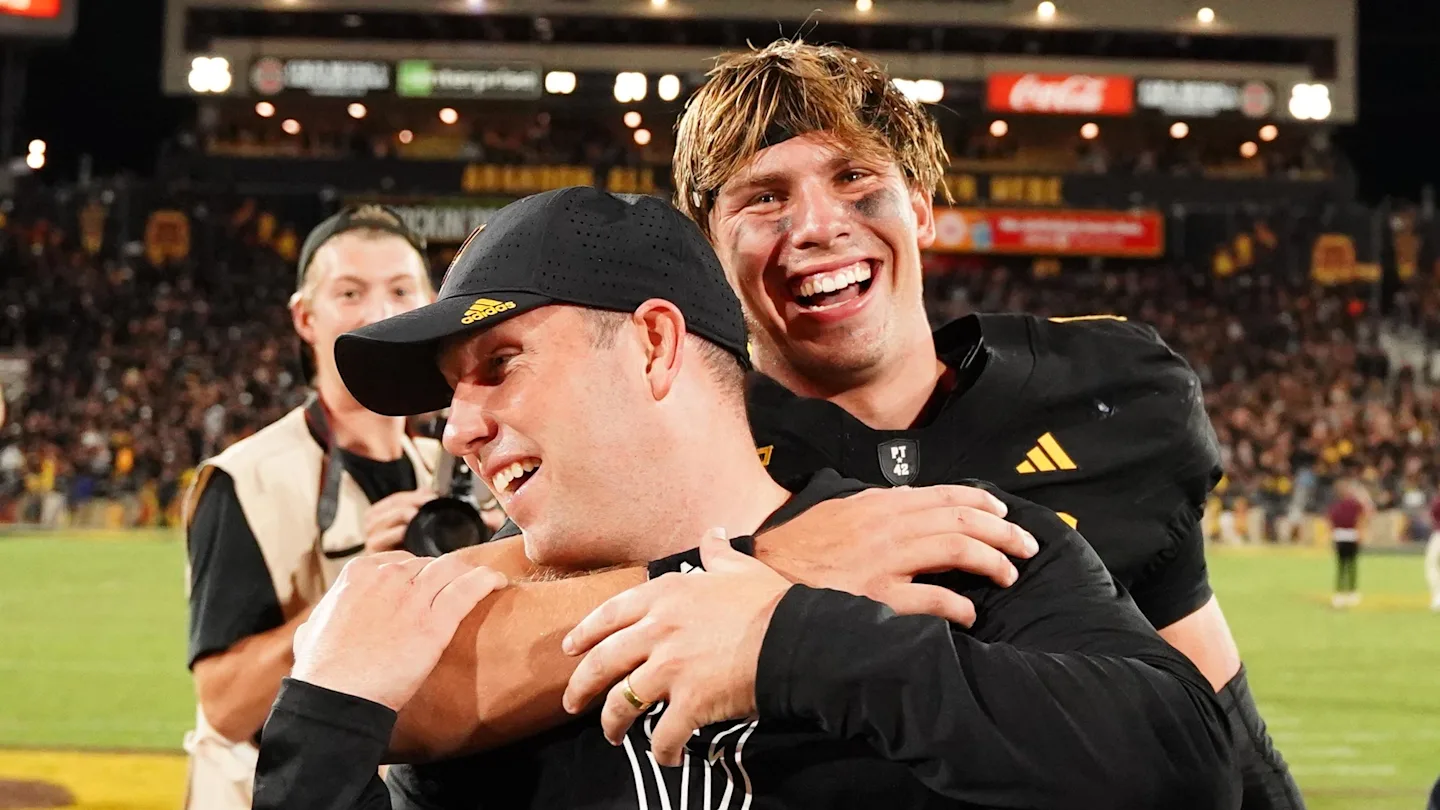
Although he hasn’t made his intentions known, Oregon Ducks’ quarterback Dante Moore has a chance to become one of the top players selected in the 2026 NFL Draft if he chooses to declare. The junior quarterback has thrown for 3,046 yards and 29 touchdowns, leading the Ducks to their second straight College Football Playoff appearance.
If Moore does wind up turning pro, here are three quarterback transfers who the Ducks could wind up targeting this offseason.
1. Sam Leavitt

One of the top players who will enter the transfer portal is Arizona State’s Sam Leavitt. He helped the Sun Devils to a Big 12 title and a CFP appearence in 2024. This past season, he was plagued by an injury that limited him to just seven games.
Leavitt will have plenty of suitors interested in his services and the Ducks should be among them if Moore ends up declaring for the draft. He is currently ranked as the No. 1 quarterback and No. 2 player in the transfer portal according to 247Sports’ rankings.
Although his NIL price tag will be high, the Washington state native could be the perfect one-year rental for Oregon as they aim to make the CFP for a third straight season in 2026.
2. Drew Mestemaker

Arguably the biggest riser from the entire 2026 season, North Texas’s Drew Mestemaker, a former walk-on, exploded onto the scene and led the country with 4,129 yards and threw for 31 touchdowns in his first season as the Mean Green’s starter.
Mestemaker would be another solid choice as a one-year rental for Oregon. The jump from the American to the Big Ten would be a big one in terms of competition, but the surrounding cast around him will be strong. He ranks as the No. 2 quarterback and No. 3 player in the portal.
MORE: Dan Lanning Reveals Oregon Ducks’ Christmas Plan Ahead Of Texas Tech
MORE: Tickets Surge For Oregon vs. Texas Tech In Historic Orange Bowl
MORE: Oregon Quarterback Dante Moore Becoming Biggest Question of NFL Draft
SIGN UP FOR OUR NEWSLETTER HERE!
3. Kenny Minchey

The only unproven option on the list, Notre Dame’s Kenny Minchey lost the starting competition to CJ Carr before the start of the year. He only appeared in six games for the Fighting Irish before electing to hit the transfer portal at the end of the regular season. Minchey threw for 196 yards this season.
The potential is there with Minchey, who was a former highly-touted recruit. He was the No. 14 quarterback and No. 169 player in the country during the 2023 recruiting cycle according to 247Sports’ rankings. As a transfer, he checks in as the No. 9 quarterback and No. 23 player in the country.
If Minchey does land with Oregon, he could be a multi-year starter for the Ducks similar to a situaion with Joe Burrow and LSU. Burrow, a talented high school recruit, was beat out at Ohio State and transferred to LSU where he was a two-year starter for the Tigers.
Recommended Articles
NIL
Big Ten Team Emerges as Dark Horse in National Championship Odds

The Oregon Ducks are among the eight teams left in the College Football Playoff. Next up for the Ducks are the Texas Tech Red Raiders in the Orange Bowl.
With the college football season winding down, who are the favorites to win the national championship?
Oregon With 4th Best National Title Odds

According to DraftKings Sportsbook, Oregon has the fourth best odds to win the national title at +750. Here are the odds for all of the remaining teams:
Ohio State Buckeyes +190
Indiana Hoosiers +320
Georgia Bulldogs +475
Oregon Ducks +750
Texas Tech Red Raiders +850
Alabama Crimson Tide +1800
Miami Hurricanes +2200
Ole Miss Rebels +2500
The path for the Oregon to win their first national championship in program history will begin at the Orange Bowl against Texas Tech. The Ducks are currently a 2.5-point favorite over the Red Raiders. If Oregon were to win this game, they would advance to the semi-finals against the winner of the Indiana-Alabama game. With Indiana and Ohio State being the top two teams in the rankings and betting odds, it solidifies Oregon as the Big Ten dark horse.

Oregon has seen Indiana one time already this season. They faced off in October in Autzen Stadium and the Hoosiers handed the Ducks their only loss of the season to this point. It was an impressive showing for Indiana, who put the country on notice in this game by snapping the nation’s longest active home winning streak.
The Ducks were in the quarterfinals of the playoff last season after earning the No. 1 overall ranking in the field and earning a first round bye. Their run did not last long as Ohio State beat them in the Rose Bowl.
MORE: Dan Lanning Reveals Oregon Ducks’ Christmas Plan Ahead Of Texas Tech
MORE: Tickets Surge For Oregon vs. Texas Tech In Historic Orange Bowl
MORE: Oregon Quarterback Dante Moore Becoming Biggest Question of NFL Draft
SIGN UP FOR OUR NEWSLETTER HERE!
Ohio State Favored To Repeat As National Champions

The favorites heading into the quarterfinals is Ohio State. This comes as no surprise as the Buckeyes have been the odds on favorites to win the national title for a majority of the season. They looked as dominant as ever in the regular season, allowing just about eight points per game. The Buckeyes had a hiccup in the Big Ten championship game, where they lost to Indiana.
If Ohio State were to win the title this season, it would be their second in a row. After earning the No. 8 seed in the playoff last season, the Buckeyes ran through the rest of the field, beating Tennessee, Oregon, Texas, and Notre Dame to win their first national championship since the 2014-15 season.
Ohio State is ranked No. 2 this year and will face No. 10 Miami in the Cotton Bowl. The Buckeyes are heavy favorites with a 9.5-point spread in their favor for that quarterfinal matchup.
- Game odds refresh periodically and are subject to change.
- If you or someone you know has a gambling problem and wants help, call 1-800-GAMBLER.
-

 Motorsports2 weeks ago
Motorsports2 weeks agoSoundGear Named Entitlement Sponsor of Spears CARS Tour Southwest Opener
-
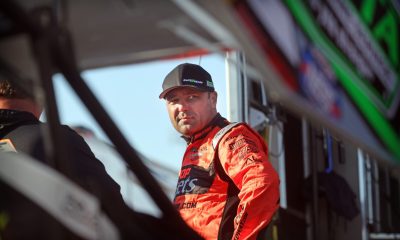
 Motorsports3 weeks ago
Motorsports3 weeks agoDonny Schatz finds new home for 2026, inks full-time deal with CJB Motorsports – InForum
-
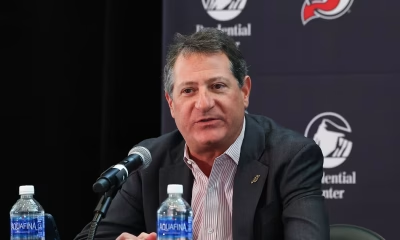
 Rec Sports3 weeks ago
Rec Sports3 weeks agoDavid Blitzer, Harris Blitzer Sports & Entertainment
-
Sports3 weeks ago
Elliot and Thuotte Highlight Men’s Indoor Track and Field Season Opener
-
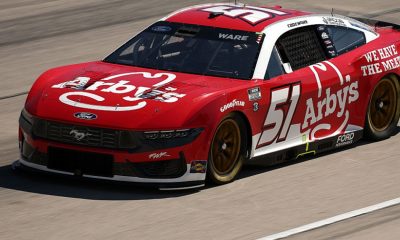
 Motorsports3 weeks ago
Motorsports3 weeks agoRick Ware Racing switching to Chevrolet for 2026
-
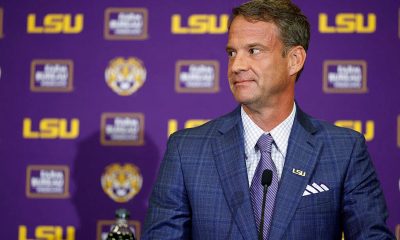
 NIL3 weeks ago
NIL3 weeks agoColleges ponying up in support of football coaches, programs
-
Sports3 weeks ago
West Fargo volleyball coach Kelsey Titus resigns after four seasons – InForum
-

 NIL2 weeks ago
NIL2 weeks agoDeSantis Talks College Football, Calls for Reforms to NIL and Transfer Portal · The Floridian
-
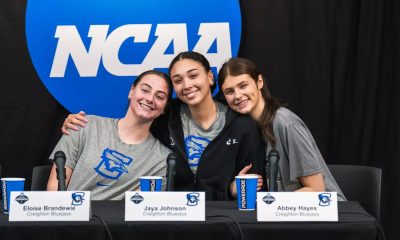
 Sports2 weeks ago
Sports2 weeks ago#11 Volleyball Practices, Then Meets Media Prior to #2 Kentucky Match
-

 Technology3 weeks ago
Technology3 weeks agoWearable Gaming Accessories Market Growth Outlook
































